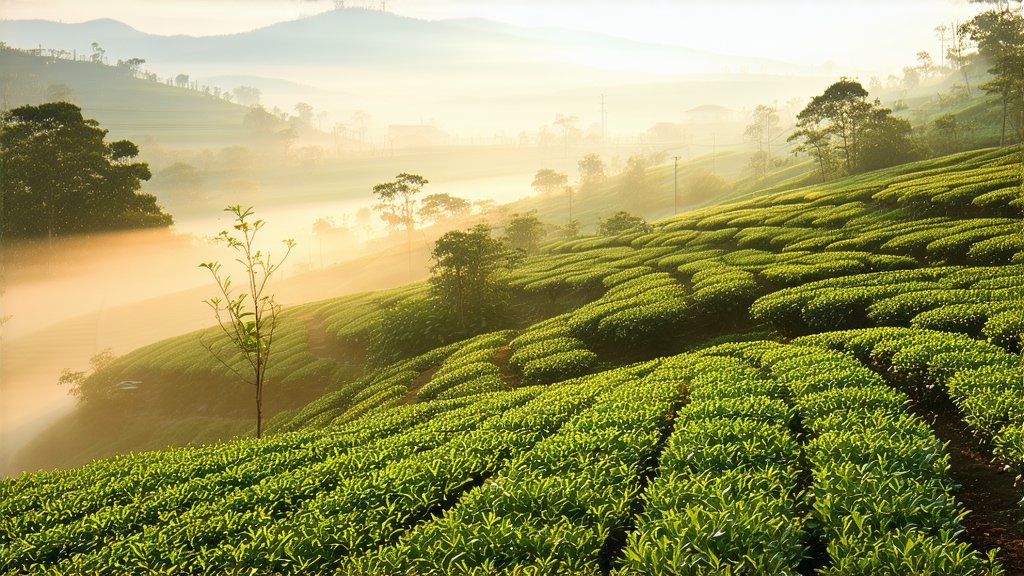
In the vast and diverse landscape of Chinese tea culture, few varieties encapsulate the essence of tradition, craftsmanship, and sensory elegance as profoundly as Keemun Black Tea. Originating from the verdant hills of Qimen County in Anhui Province, this exceptional tea has carved a niche for itself on the global stage, captivating palates with its distinctive flavor profile and rich historical narrative. As we delve into the depths of Keemun Black Tea, let us embark on a journey that explores its storied past, intricate classifications, meticulous production process, and nuanced art of appreciation.
A Legacy Brewed in Time
The tale of Keemun Black Tea traces back to the early Qing Dynasty (1644-1912), during which time it gained imperial favor and became a prized commodity for export. Its name, "Keemun," is derived from the transliteration of Qimen County's name in English, underscoring its deep roots in this specific terroir. Over centuries, Keemun has evolved, adapting to changing tastes while preserving its core identity—a testament to the resilience and ingenuity of Chinese tea culture.
Varietals: A Symphony of Flavors
Keemun Black Tea is not monolithic; rather, it comprises several grades and styles, each offering a unique symphony of flavors. Among them, Gongfu Keemun stands out for its robust character and full-bodied taste, often compared to the strength of black teas from Assam, India. Conversely, the more delicate Hao Ya (Tippy) Keemun features golden tips that imbue the brew with a subtle sweetness and floral aroma, akin to the Darjeeling teas of West Bengal. These variations reflect not only different harvesting practices but also the skillful manipulation of oxidation levels during processing.
Craftsmanship: From Leaf to Cup
The magic of Keemun lies in its meticulous production process, where tradition meets precision. It all begins with the careful selection of tea leaves, typically from the Camellia sinensis var. assamica plant, known for its larger leaf size and robust flavor potential. Following plucking, the leaves undergo withering to reduce moisture content and initiate enzymatic activity. This step is crucial as it sets the stage for the subsequent rolling process, where leaves are twisted to break cell walls, facilitating oxidation.
Oxidation, a pivotal phase in black tea production, transforms the green leaves into their characteristic dark hue and imparts complex flavors. In Keemun's case, this process is carefully controlled to achieve a perfect balance between astringency and sweetness, with some leaves being fully oxidized for a stronger profile, while others receive partial oxidation for a lighter touch.
After oxidation, the leaves are dried to halt further chemical reactions, preserving their newly acquired flavors. Sorting follows, ensuring uniformity in size and quality before packaging. Each step, from plucking to packaging, demands expertise and attention to detail, contributing to Keemun's reputation for excellence.
The Dance of Sensory Appreciation
To truly appreciate Keemun Black Tea is to engage in a multisensory experience that transcends mere consumption. Begin by selecting a high-quality loose leaf tea and using freshly drawn, filtered water heated to around 95°C (203°F). Pre-warm your teapot and cup to maintain optimal brewing temperatures.
For a traditional Gongfu-style brewing, use approximately 3 grams of tea per 150ml of water. Steep for 1-3 minutes, depending on personal preference for strength. Observe the liquor's transformation from a light amber to a deeper copper hue, indicative of the tea's richness.
As you bring the cup close, inhale deeply to capture the intricate aroma—notes of orchid, tangerine, and a hint of honey may dance upon your senses. Sip slowly, allowing the tea to coat your palate, savoring the initial briskness that mellows into a lingering sweetness. Pay attention to the texture, which should be smooth yet invigorating, revealing layers of complexity with each successive infusion.
Conclusion: A Timeless Elixir
Keemun Black Tea is more than just a beverage; it is a bridge connecting past and present, tradition and innovation. Its enduring popularity among tea connoisseurs worldwide speaks volumes about its ability to adapt while retaining its authentic charm. As you embark on your own exploration of Keemun, immerse yourself in its history, relish in its diversity, marvel at its craftsmanship, and delight in its sensory wonders. In doing so, you not only honor a centuries-old legacy but also contribute to the living tradition that continues to enrich our world with every steaming cup.